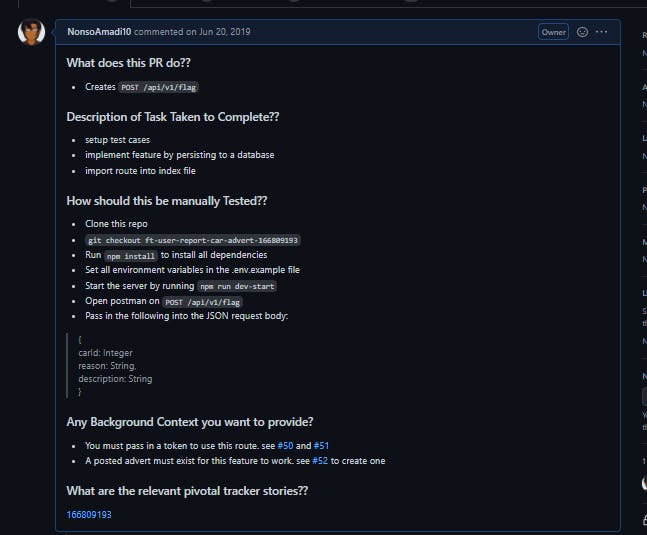It is with no doubt that version control has improved the way software is delivered and how cross-functional teams collaborate. It has enabled developers to ship product features faster and with ease, while at the same time encourage peer-to-peer code reviews and ensure each feature remains bug-free. It has given rise to the development of open-source systems that are resilient and secured. But all this success (in addition to healthy collaboration among developers) can be attributed to making effective pull requests. In this article, I am going to outline the features of an effective pull request and why each feature is essential for your software development team.
What are pull requests?
Pull requests(PRs) are a feature that makes it easier for developers to collaborate on a version control system such as Github or Bitbucket. In their simplest form, pull requests are a mechanism for a developer to notify team members that they have completed a feature. Once their feature branch is ready, the developer files a pull request via their Bitbucket or Github account. This lets everybody involved know that they need to review the code and merge it into the base branch. But, the pull request is more than just a notification—it’s a dedicated forum for discussing the proposed feature. If there are any problems with the changes, teammates can post feedback in the pull request and even tweak the feature by pushing follow-up commits. All of this activity is tracked directly inside of the pull request.
Features of effective pull requests
A good pull request is expected to be well-detailed to offer members of a software development team a vivid explanation of the task at hand and how it was implemented. The benefit is that it allows members of the team to be on the same wavelength, review code features effectively, and offer practical ASK feedback(feedbacks that are Actionable,Specific and Kind). Now let us outline what the necessary features include.
The picture below is an example of how detailed a pull request should be:

- What does this PR do?
This part of the pull request puts a title to the feature in review. It gives whoever is reviewing the request an overview of what this pull request is all about and what it accomplishes.
- Description of Task completed
This describes the necessary tasks the request in question completes. In the case of an API, it could be all the necessary steps taken to build out that feature such as writing tests for the feature or installing a dependency that is required for the feature. It allows any person reviewing to understand your thought process.
- How should this be manually tested?
This describes the required step needed to test out the feature. Does each member of the team need to recreate this in their local development environment to test? Is it something that requires a virtual environment? The steps to test it out are expected to be listed so that every member can contribute meaningful feedback and understand how you solved the problem.
- Any Background Context Provided
This describes the assumptions you made when building out this feature. It could also include a prerequisite needed before this feature can be tested. An example would be the case of an admin feature whereby all admin users can add or delete users, a practical background context would be that the reviewer requires an admin account to test the feature.
- What are the relevant User Stories(optional)
In a situation where each feature is a user story or a product story, it will be nice to list out the corresponding story ID on the project management board. This allows the team to compare if the feature meets the required criteria and allows room for healthy feedbacks
- Screenshots(if appropriate)
In a situation where the feature is a frontend implementation, it would be essential to put out a screenshot of what the said implementation looks like.
Collaboration is no doubt an essential quality amongst high performing software development team and while this is essential, every team have different ways by which code reviews and Pull requests are carried out. One thing stands out "PRs should clearly describe what the maintainer/team members can expect when reviewing the code and any standards you, as the developer, have considered before submitting the pull request".
Thanks for reading!! Happy Coding!

